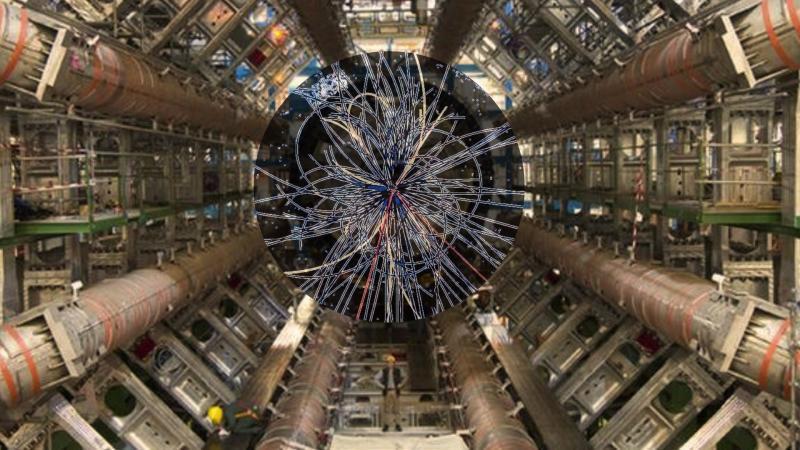
CERN Scientists Shedding Light on Antimatter & Universe’s Origins
The Large Hadron Collider (LHC) at CERN, one of the most complex and powerful scientific instruments ever built, has once again yielded groundbreaking results. In a recent study, the ALICE collaboration has confirmed the first-ever evidence of antihyperhelium-4, a type of antimatter. This discovery has significant implications for our understanding of the fundamental forces of nature, the balance between matter and antimatter, and the early moments of the universe.
Antimatter is a fascinating and mysterious realm that has long been a subject of scientific curiosity. For decades, researchers have been trying to shed light on its properties and behavior, hoping to unlock the secrets of the universe. The discovery of antihyperhelium-4 is a major breakthrough in this quest, providing new insights into the fundamental forces that shape our reality.
The Large Hadron Collider: A Scientific Marvel
The Large Hadron Collider is a 27-kilometer-long underground tunnel, where protons are accelerated to nearly the speed of light and then made to collide at incredibly high energies. This process creates a vast array of subatomic particles, many of which are unknown or poorly understood. The LHC is an extraordinary tool, allowing scientists to recreate the conditions that existed in the universe just moments after the Big Bang.
The ALICE collaboration, led by CERN, is one of the largest and most ambitious scientific projects in the world. Comprising over 1,000 scientists from 40 countries, ALICE (A Large Ion Collider Experiment) is dedicated to studying the properties of matter and antimatter at extremely high energies. By analyzing the particles produced in high-energy collisions, researchers can gain a deeper understanding of the fundamental forces that govern the universe.
Antihyperhelium-4: A New Era in Antimatter Research
The discovery of antihyperhelium-4 is a significant milestone in the quest to understand antimatter. This exotic particle is created when two antiprotons are bound together, forming a nucleus that is mirror-image of the ordinary hyperhelium-4 (He-4) found in our universe. Antihyperhelium-4 is a rare and fleeting particle, produced only under extreme conditions in high-energy collisions.
The ALICE collaboration used the LHC to create a massive amount of antihyperhelium-4 by colliding heavy ions at incredibly high energies. By analyzing the particles produced in these collisions, researchers were able to identify the characteristic decay products of antihyperhelium-4, providing conclusive evidence of its existence.
Implications for Our Understanding of the Universe
The discovery of antihyperhelium-4 has significant implications for our understanding of the universe and the fundamental forces that govern it. Antimatter is a key component of the universe, making up about 10% of its total mass-energy density. However, the reasons why antimatter is so rare in the universe remain a mystery.
This new discovery provides valuable insights into the balance between matter and antimatter, shedding light on the processes that govern their interaction. By studying the properties of antihyperhelium-4, researchers can gain a deeper understanding of the fundamental forces that shape our reality, including the strong nuclear force, electromagnetism, and the weak nuclear force.
The ALICE collaboration’s findings also offer new opportunities for studying the early universe, when matter and antimatter were still in balance. By recreating the conditions that existed in the first fractions of a second after the Big Bang, scientists can gain insights into the origins of the universe and the reasons why matter eventually dominated antimatter.
Conclusion
The discovery of antihyperhelium-4 is a major breakthrough in the quest to understand antimatter and the universe’s origins. The ALICE collaboration’s findings offer new insights into the fundamental forces of nature, the balance between matter and antimatter, and the early moments of the universe.
As scientists continue to explore the mysteries of antimatter, we can expect even more groundbreaking discoveries in the years to come. The Large Hadron Collider remains a powerful tool for unraveling the secrets of the universe, and the ALICE collaboration’s work is a testament to the power of human curiosity and ingenuity.
Source:
https://researchmatters.in/news/exotic-antimatter-spotted-heavy-ion-collisions-lhc






